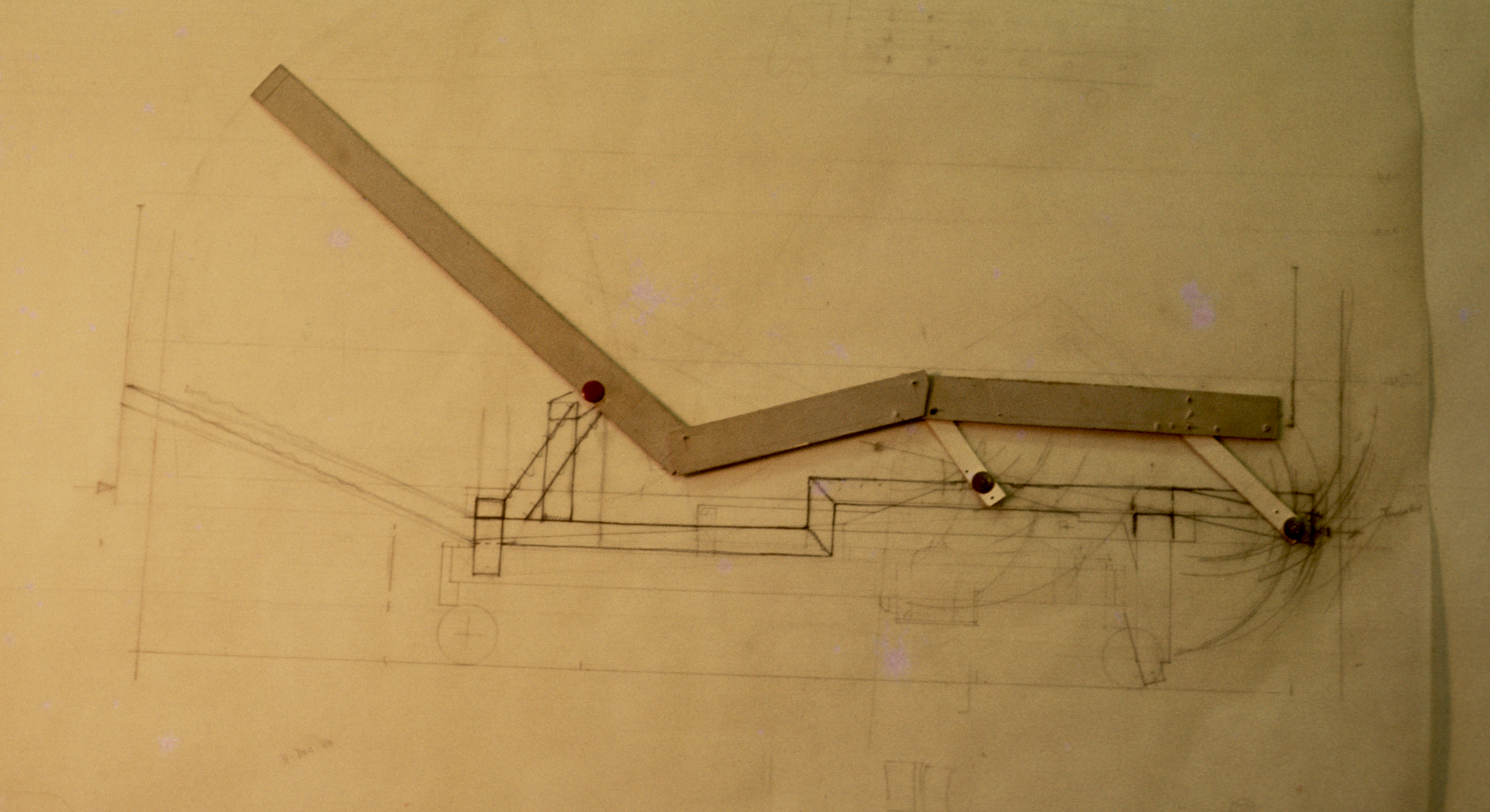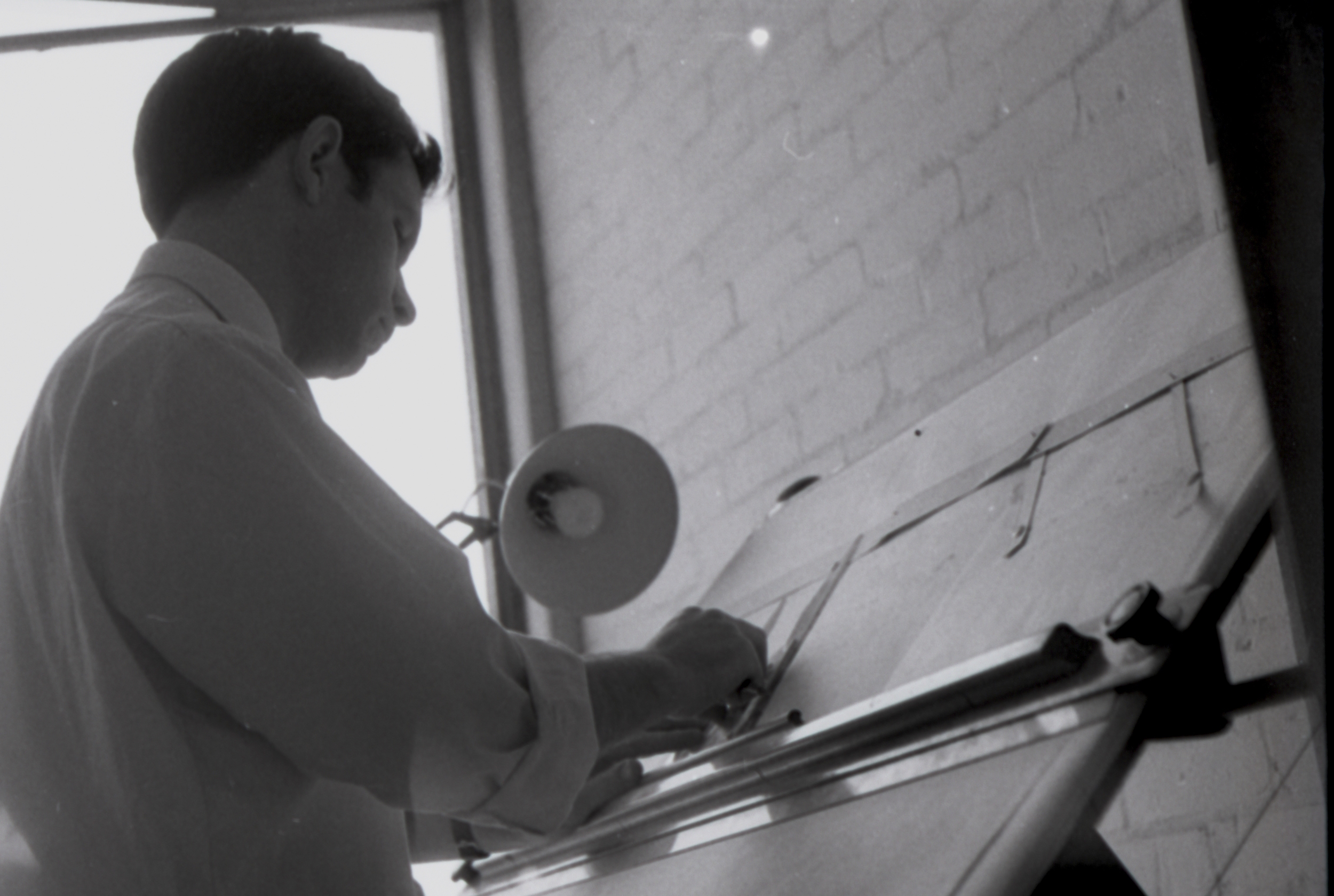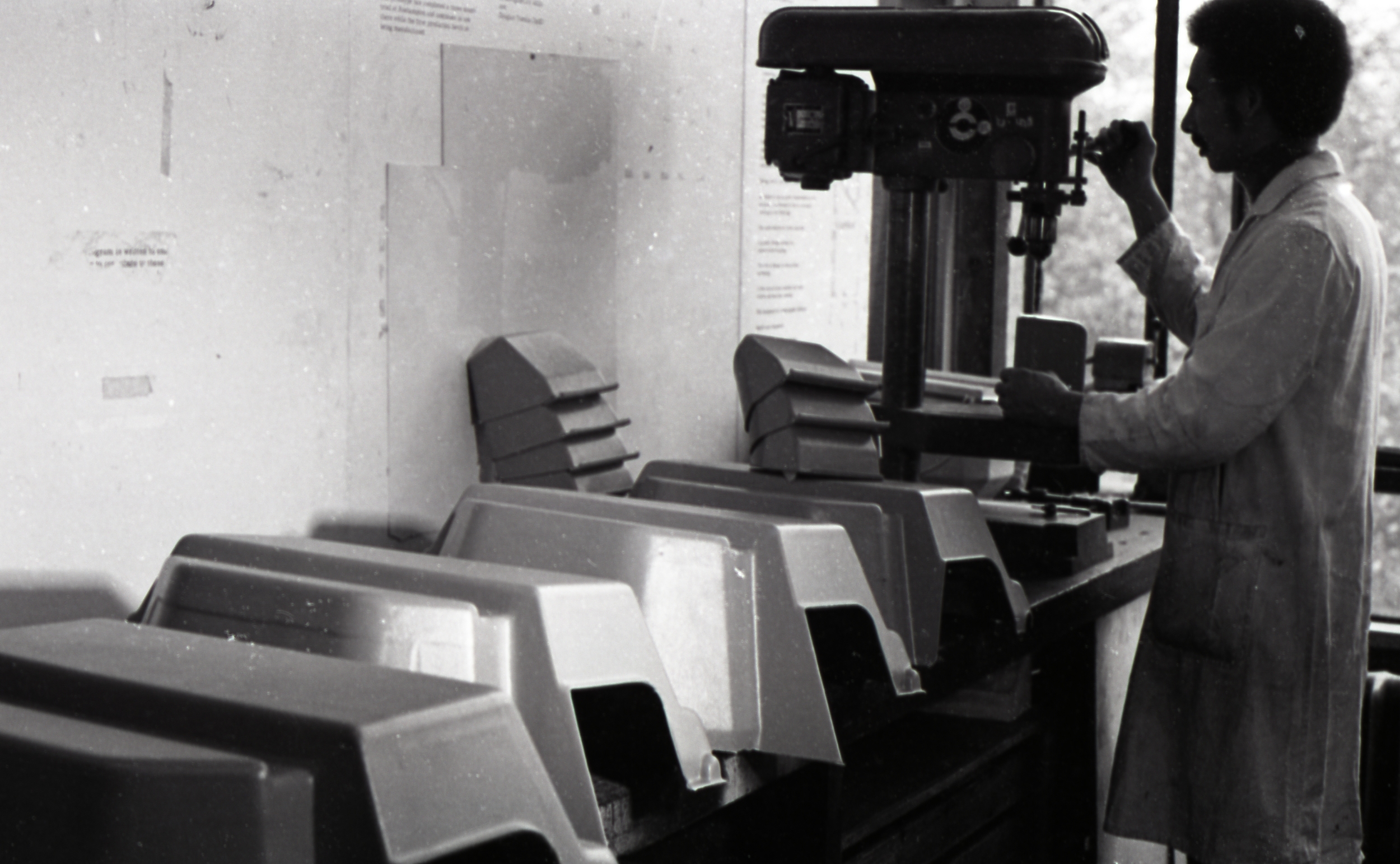Some examples to emphasise the practical design projects of the Department.
Design activities included fact-finding and needs-analysis, drawing and low-fidelity prototyping, building prototypes in a range of materials in the RCA workshops, manufacturers constructing advanced prototypes, and extensive user-testing within the DDR and externally on site.
Design and Design Research
Sometimes seen as a theoretically-oriented enterprise, the Department of Design Research always engaged in practical design projects as well as theoretical development. Practical research activities brought in much of the essential funding of the Department. More importantly, they acted as a test bed for ideas: theory fed into practice and vice versa. In our paper for DRS 2016 (Boyd Davis and Gristwood 2016), we argue that Bruce Archer's theoretical model of designing was fundamentally altered by his experience of large multi-disciplinary projects such as the King's Fund hospital bed.
A key figure in the practical design work was Kenneth Agnew, who graduated in Engineering Design at the RCA having originally trained as an architect. A Research Fellow from 1965, he become a central figure in the DDR through to 1978, designing the Hospital Bed and working on many other projects. He was later Professor of Design at the University of Ulster. Kenneth has been one of our key sources of information for this project. Many of the pictures are taken from his Archive recently acquired by the RCA.
Bruce Archer (centre) at the International Council of Societies of Industrial Design in Vienna in 1965. From the Agnew Archive at the Royal College of Art, London.
Archer had something to say about the role of practical projects, in relation to the hospital bed work:
We produced our own design, as well, for three good reasons.
- First of all, it is an excellent discipline on research if one knows that one must produce a design in conformity with it in the end.
- Secondly, it is an excellent discipline upon the existing manufacturers, who would be less inclined to say that the specification could not be met if they knew we were going to meet it ourselves.
- Thirdly, it was necessary to have at least one bed design exactly meeting the specification in order to carry out field tests in hospitals to prove whether our specification was any good or not.
There was a fourth reason. There would be no justification for such research to be carried out in a design school if no design was going to result.
(Archer address at The International Council of Societies of Industrial Design (ICSID), Vienna, 1965, quoted in Baynes 1967:48).
See also
For more on the Hospital Bed project, see HOW TO MAKE A BED: THE KING'S FUND HOSPITAL BED PROJECT
Baynes, Ken. 1967. Industrial Design & the Community. London: Lund Humphries.
Boyd Davis, Stephen and Gristwood, Simone. 2016. The Structure of Design Processes: Ideal and Reality in Bruce Archer’s 1968 Doctoral Thesis. Proceedings of DRS 2016, Design Research Society 50th Anniversary Conference. Brighton, UK, 27-30 June 2016.





